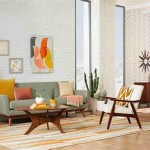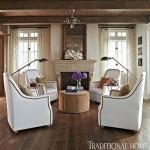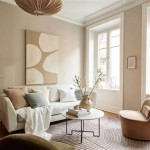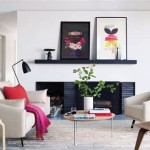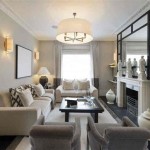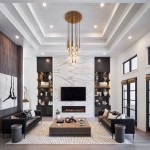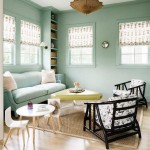Living Room Side Table With Drawer: Functionality and Style
The living room side table with a drawer represents a versatile piece of furniture capable of enhancing both the aesthetics and practicality of a living space. These tables, often positioned next to sofas, armchairs, or beds, serve as convenient surfaces for lamps, books, beverages, and other personal items. The inclusion of a drawer elevates their functionality, providing concealed storage for remote controls, reading glasses, writing utensils, and other small necessities, thereby contributing to a cleaner, more organized living environment.
The popularity of living room side tables with drawers stems from their adaptability to various design styles and their ability to address the needs of modern living. They are available in a wide array of materials, finishes, and sizes, ensuring compatibility with diverse interior design schemes. From minimalist modern to rustic farmhouse, the market offers a suitable side table with a drawer to complement virtually any aesthetic preference. This article aims to explore the key aspects of living room side tables with drawers, examining their design variations, functionality, material considerations, and selection criteria.
Design and Style Considerations
The design of a living room side table with a drawer is a crucial factor in its overall appeal and its ability to integrate seamlessly into a living room's existing decor. The style of the table should complement the dominant design themes of the room, whether it be contemporary, traditional, transitional, or eclectic.
Contemporary side tables with drawers often feature clean lines, minimalist profiles, and a focus on functionality. They may incorporate materials such as metal, glass, and engineered wood, and often exhibit a sleek, understated aesthetic. Finishes commonly include matte black, brushed nickel, or high-gloss white, reflecting a preference for modern simplicity. These tables are designed to blend seamlessly into modern interiors, providing a subtle yet functional addition to the space.
Traditional side tables with drawers typically draw inspiration from classic furniture designs, incorporating elements such as turned legs, decorative molding, and ornate hardware. These tables are often crafted from solid hardwoods like oak, cherry, or mahogany, and finished with rich stains or painted surfaces. The drawer fronts may feature intricate detailing, adding to the table's overall elegance and sophistication. Traditional side tables are well-suited for living rooms with a formal or classic ambiance.
Transitional side tables with drawers represent a middle ground between contemporary and traditional styles, blending elements of both to create a versatile and timeless design. These tables often feature clean lines and simple silhouettes, but may also incorporate subtle decorative details such as beveled edges or understated hardware. Materials commonly used include solid wood, wood veneers, and engineered wood products. Finishes may range from light to dark stains, or painted surfaces in neutral tones. Transitional side tables offer a flexible option that can complement a wide range of interior design styles.
The size and shape of the side table are also important considerations. The table should be proportionate to the surrounding furniture and the overall dimensions of the room. Smaller side tables are ideal for compact living spaces, while larger tables may be more appropriate for larger rooms. The shape of the table can also influence its functionality and aesthetic appeal. Square or rectangular tables offer a stable surface for lamps and other items, while round or oval tables can soften the lines of a room and add a touch of elegance.
Functionality and Storage Solutions
The primary advantage of a living room side table with a drawer lies in its enhanced functionality. The drawer provides a concealed storage space for items that are frequently used in the living room, but which may contribute to clutter if left out in the open. Remote controls, reading glasses, magazines, and writing utensils can be neatly stored within the drawer, keeping the living room tidy and organized.
The size and configuration of the drawer can vary depending on the design of the table. Some side tables feature a single, large drawer, while others have multiple smaller drawers. The drawer interior may be lined with felt or other soft materials to protect delicate items and prevent them from sliding around. Some drawers may also include dividers or organizers to further enhance their functionality.
In addition to the drawer, some side tables may also incorporate other storage features, such as shelves or open compartments. These additional storage spaces can be used to display books, decorative items, or other personal belongings. The combination of drawers and shelves provides a versatile storage solution that can help to keep the living room organized and clutter-free.
The height of the side table is also an important consideration from a functional perspective. The table should be positioned at a comfortable height relative to the surrounding seating, allowing users to easily reach items placed on the table without having to strain or stretch. Typically, the height of a side table should be similar to the height of the armrest of the sofa or armchair next to which it is placed.
Furthermore, the drawer mechanism is a critical aspect of the table's functionality. Drawers should open and close smoothly and quietly, without sticking or binding. High-quality drawer slides ensure smooth operation and can significantly enhance the user experience. Some side tables may feature self-closing drawers, which gently close with a soft touch, preventing slamming and reducing noise.
Material Considerations and Durability
The materials used in the construction of a living room side table with a drawer significantly impact its durability, appearance, and overall value. Common materials include solid wood, wood veneers, engineered wood products, metal, and glass.
Solid wood is a popular choice for side tables due to its natural beauty, strength, and durability. Hardwoods like oak, cherry, and maple are particularly well-suited for furniture construction, as they are resistant to scratches, dents, and other forms of damage. Solid wood side tables can last for many years with proper care and maintenance. They often exhibit unique grain patterns and natural variations in color, adding to their aesthetic appeal.
Wood veneers consist of thin layers of wood that are adhered to a substrate, such as plywood or particleboard. Veneer furniture can offer a similar appearance to solid wood furniture at a lower cost. High-quality wood veneers can be very durable and resistant to warping or cracking. However, veneer furniture may be more susceptible to damage from moisture or excessive wear and tear.
Engineered wood products, such as plywood, particleboard, and MDF (medium-density fiberboard), are commonly used in furniture construction due to their affordability and stability. These materials are less prone to warping or cracking than solid wood, and can be easily shaped and finished. However, engineered wood products may not be as durable as solid wood, and may be more susceptible to damage from moisture.
Metal is often used in the construction of side table frames and legs, providing strength and stability. Metal finishes can range from powder-coated colors to polished chrome or brushed nickel, offering a variety of aesthetic options. Metal side tables are often lightweight and easy to move, making them a practical choice for modern living spaces.
Glass is sometimes used for side table tops or shelves, adding a touch of elegance and sophistication. Tempered glass is a durable and safe option, as it is resistant to shattering. Glass surfaces are easy to clean and maintain, and can complement a variety of design styles.
When selecting a living room side table with a drawer, it is important to consider the quality of the materials and the overall construction of the table. Look for tables that are made with durable materials and that are well-constructed, with solid joints and sturdy legs. Paying attention to these details will ensure that the side table will provide years of reliable service and enjoyment.
The finish applied to the table is also a crucial factor. Durable finishes, such as polyurethane or lacquer, provide protection against scratches, stains, and moisture. The finish should be evenly applied and free from imperfections. Regularly cleaning and maintaining the finish will help to preserve the table's appearance and extend its lifespan.

Convenience Concepts American Heritage 3 Tier Light Walnut End Table 7107159dwn

18 1 Drawer Contemporary Side Table With Open Storage Walker Edison

Storage End Tables Side Pottery Barn

End Side Tables

Narrow Side Table With Drawer For Sale Wholesale Furniture Supplier Vasagle

Natural Rectangle End Table With Drawers Modern Sofa For Living Room Homary

Side Tables End West Elm

Bergen Oak Side Table

Hammary Home Furnishings

Antique White End Tables Rustic Distressed Side

